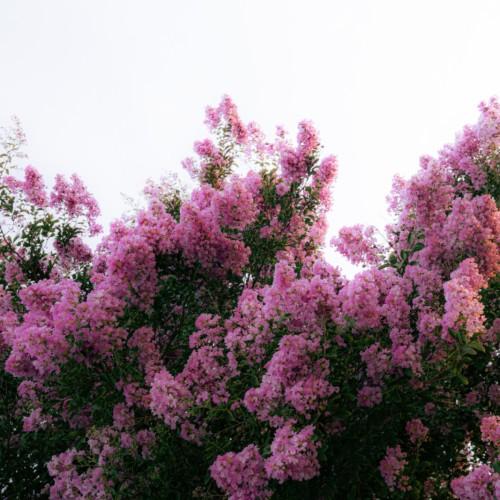
crape myrtle
Lagerstroemia indica 'Zuni'
Cycle:
Perennial
Watering:
Average
Hardiness Zone:
6 - 9
Flowers:
Flowers
Sun:
Full sun
Leaf:
Yes
Growth Rate:
Low
Maintenance:
Moderate
Salt Tolerant:
Yes
watering
Crape myrtles (Lagerstroemia indica 'Zuni') prefer regular watering. During the growing season, water to keep the soil consistently moist. During hot, dry weather, check soil moisture level at least once a day and water as needed -- usually every 1-3 days depending on soil type and weather. In cooler climates, watering may be less frequent. During the non-growing season, water as needed to keep the soil from drying out completely. Soil should not be saturated or soggy.
sunlight
Crape myrtle (Lagerstroemia indica 'Zuni') is best grown in an area with full sun, which means at least 8 hours of direct sunlight every day. This crape myrtle in particular is native to China and thrives in hot, humid climates. During the summer months, a crape myrtle should get direct sunlight throughout the entire day for optimum growth. During the spring and autumn months, 8 hours of direct sunlight is still recommended, but the plant can tolerate some morning or late afternoon shade. In winter, exposure to the sun should be limited to about 6 hours.
pruning
Crape myrtles (Lagerstroemia indica 'Zuni') should be pruned in late winter or early spring before the buds begin to swell and the growing season starts. To promote strong growth and healthy plants, heavy pruning is not recommended because it can damage the plant. Instead, pruning should be judicious and strategic. The most important task when pruning crape myrtles is to remove dead, damaged, and diseased wood. By removing these branches, the plant will be more likely to remain healthy and disease free. Other pruning tasks include trimming back overgrown or leggy branches and removing crossing or suckering branches. To promote strong growth, it is also helpful to thin the canopies to allow for better air circulation and light penetration. This should be done judiciously to reduce the amount of shock to the plant. While some selective pruning may be done throughout the growing season, major pruning should be saved for the winter or early spring.
